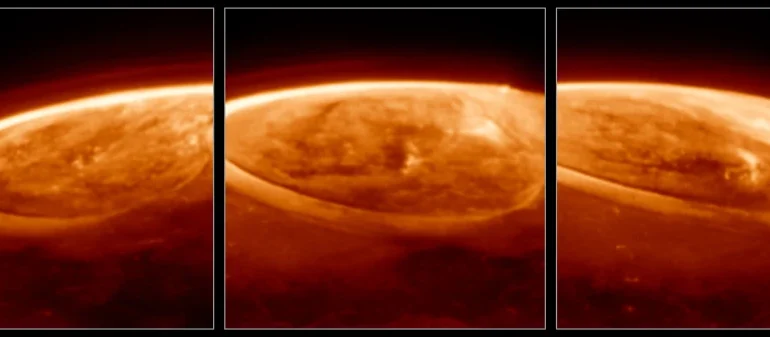NASA’s James Webb Space Telescope has captured vivid images of Jupiter’s auroras, revealing that the colorful light displays on the gas giant are hundreds of times brighter than Earth’s northern lights.
The observations offer new insights into the dynamic atmospheric and magnetic conditions of the solar system’s largest planet.
Auroras on both Jupiter and Earth are triggered when high-energy particles from solar storms collide with atmospheric gases near magnetic poles. However, Jupiter’s version of this phenomenon is significantly more intense. In addition to particles from the Sun, Jupiter’s powerful magnetic field also captures material ejected by volcanic eruptions on its moon Io, further fueling its glowing auroras.
The newly captured images highlight fast-changing auroral features in unprecedented detail, thanks to Webb’s specialized near-infrared camera. The data were gathered during a study conducted on December 25, 2023, by a research team led by Jonathan Nichols of the University of Leicester in the United Kingdom. Their findings were published in Nature Communications.
With input from NBC News.










The latest news in your social feeds
Subscribe to our social media platforms to stay tuned